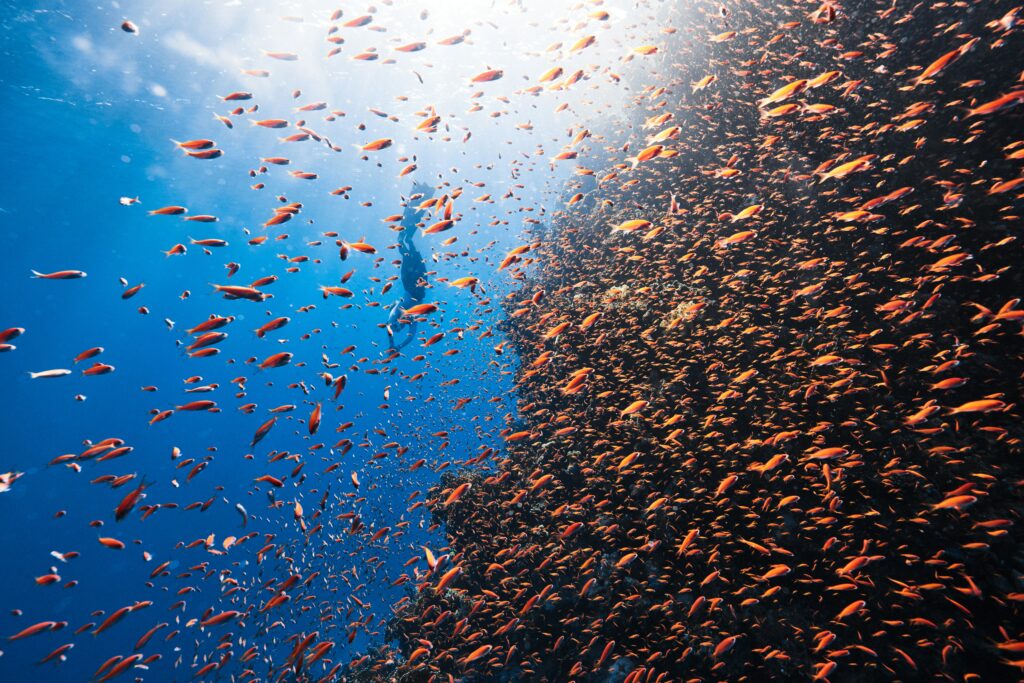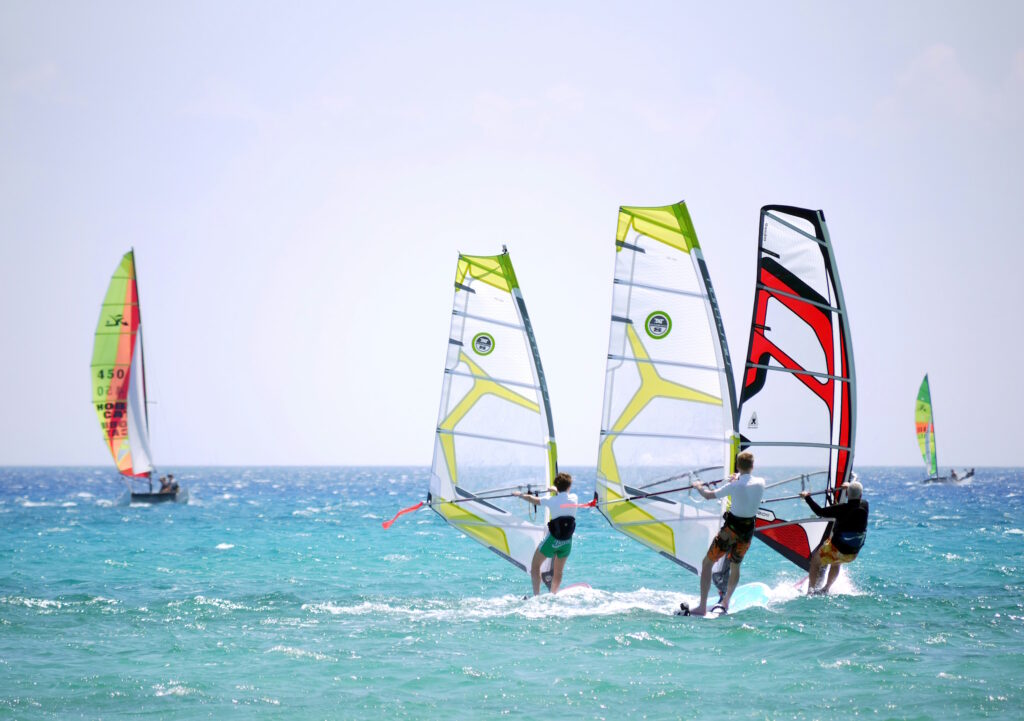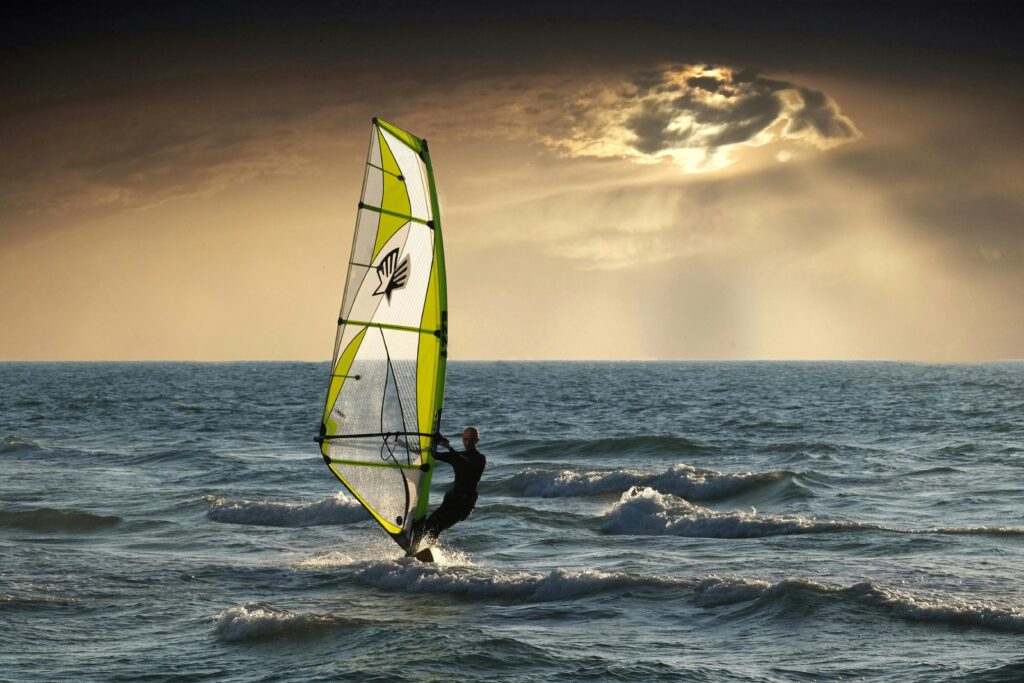Diving into the depths of the Andaman Sea to explore the King Cruiser Wreck is a thrilling adventure that’s etched in my memory. This submerged sanctuary, located between Phuket and Phi Phi Islands, offers an exceptional peek into an aquatic world teeming with life, wrapped around a piece of modern history. It’s not just a dive; it’s a dive back in time, to 1997, when the King Cruiser ferry tragically sank and found its new purpose beneath the waves (while this was a tragic accident the boat sunk slowly and there was no loss of life).
The site has since evolved into a magnificent artificial reef, attracting divers from around the globe. I’ve experienced firsthand the allure of swimming through this large, sunken vessel, surrounded by colorful marine life that has claimed the wreck as its own. It’s a surreal experience that combines the thrill of exploration with the beauty of nature in a way that few other dive sites can match.
Key Takeaways
- Historical Significance: The King Cruiser Wreck, originally a car ferry, sank in 1997 but has since become an important artificial reef, offering both recreational and environmental benefits.
- Marine Life: Divers at the King Cruiser Wreck can expect to see a diverse range of marine life, including schools of barracuda, trevallies, rare leopard sharks, and vibrant coral formations.
- Dive Conditions: Best between November and April for visibility and sea conditions; divers should be prepared for variable currents and a range of visibility from 5 to 20 meters.
- Safety and Preparation: Strong currents and varying visibility necessitate proper preparation and safety measures, including potentially hiring a knowledgeable guide and using appropriate diving equipment.
- Optimal Visit Time: Visiting during the peak season from November to April offers the best conditions for clearer waters and more active marine life, enhancing the overall diving experience.
- Accessibility: The wreck is reached by boat from Phuket or the Phi Phi Islands, with trips typically taking around two hours, making it an accessible adventure for those in the region.
Overview of The King Cruiser Wreck Dive Site
Location and Accessibility
The King Cruiser Wreck is accessible primarily by boat from Phuket or the Phi Phi Islands, with the journey taking approximately two hours from either location. Dive operators in the region offer regular trips to the site, catering to both novice and experienced divers. The site’s coordinates are roughly at 7.8283° N, 98.5877° E, lying in international waters which allow year-round access, weather permitting. The best diving conditions prevail from November to April, providing clearer waters and smoother surface conditions.
Historical Significance
Originally a car ferry, the King Cruiser met its fate on May 4, 1997, when it accidentally struck the Anemone Reef and sunk. Miraculously, all passengers were rescued, and the vessel began its second life as an artificial reef. The wreck has since played a vital role in marine conservation, offering a habitat for a variety of marine life and contributing to the growth of coral formations. This historical transition from transport vessel to thriving sea haven captures the resilience and transformative power of nature, making it not only a site of recreational interest but also of environmental significance.
What to Expect When Diving at The King Cruiser Wreck
Diving at the King Cruiser Wreck presents an unforgettable underwater experience teeming with vibrant marine life and fascinating structures. If you explore this historic site, you’ll find that its sunken mysteries are matched by excellent dive conditions, especially suited for those looking for more than a straightforward dive.
Marine Life in the Area
There is a large array of marine creatures that called the King Cruiser Wreck their home. You can see schools of barracuda and trevallies swirling around the sunken ferry, creating a lively spectacle. Rare sightings of leopard sharks and the occasional whale shark make each dive unpredictable and thrilling. Soft corals cover the wreck, providing a colorful backdrop to the schools of snappers, fusiliers, and lionfish that frequently appear.
Visibility and Dive Conditions
Visibility at the King Cruiser Wreck usually varies between 5 to 20 meters, depending on weather conditions and the time of year. The best conditions are typically from November to April when the seas are calmest. Currents around the wreck can sometimes be strong and unforeseen, necessitating a reasonable level of proficiency in navigation and buoyancy control from divers. The thermocline often affects the temperature during dives, but the water remains a comfortable 27 to 30 degrees Celsius. It’s this combination of clear waters and intriguing wildlife together with the wreck’s formidable presence that make diving here a captivating affair.
It is located 31 meters deep, with the highest point of the boat 16 meters deep. The board itself is 85 meters long, which means you can dive multiple times on the site and still discover new areas.
Preparing for Your Dive
Diving into the King Cruiser Wreck is a captivating adventure, requiring thorough preparation to ensure a safe and enjoyable experience. Here’s what you need to know:
Safety Considerations
Understanding the risks associated with diving at the King Cruiser Wreck is crucial, especially due to the presence of strong currents and varying visibility. It’s essential to check the local diving conditions prior to your trip, particularly focusing on currents and weather forecasts. If you’re not an experienced diver or accustomed to diving in conditions with strong currents, I recommend hiring a professional guide from a reputable diving company. Ensure that your dive guide is familiar with the wreck’s layout and safe entry points.
Every diver should complete a brief on emergency procedures with their guide before the dive. This includes knowing the location of safety equipment and understanding the emergency ascent procedures. Listen carefully and ask questions if something isn’t clear. If diving during the peak season from November to April, plan ahead, as this is when visibility is best and the site attracts a large number of divers.
Necessary Equipment
Choosing the right equipment can make a significant difference when exploring the King Cruiser Wreck. At a minimum, you will need a SCUBA set that includes a regulator, buoyancy control device (BCD), and wetsuit. Given the depth of the wreck, ranging from 14 to 30 meters, consider bringing a dive computer to monitor your depth and dive time efficiently.
Additionally, due to low visibility, which can be as little as 5 meters depending on the conditions, a reliable dive light will enhance your ability to observe the wreck’s details and spot marine life. Carrying a surface marker buoy (SMB) is also a good practice, which allows boat operators to track divers’ positions. Finally, ensure that all your equipment is in good working order before you embark on your dive, and always have a spare parts kit available for quick fixes.
If you haven’t brought your own gear, and, in order to get the right guidance and knowledge through the dive, I highly recommend checking out the below clubs that offer dives to the King Cruiser:
Best Time to Visit The King Cruiser Wreck
I find that the optimal period to visit the King Cruiser Wreck aligns with the broader diving season in Phuket, generally spanning from November to April. This timing is crucial if divers wish to experience clear waters and the most vibrant marine life. During these months, the Andaman Sea boasts calmer conditions and provides the highest visibility, ranging from 15 to 20 meters. This increased clarity in water is essential for fully appreciating the intricate details of the wreck and the surrounding coral reefs.
Interestingly, the King Cruiser Wreck’s marine environment peaks during this season, with frequent sightings of exotic species such as whale sharks and manta rays, especially between February and May. This window offers a unique opportunity to observe these magnificent creatures in their natural habitat, enhancing the diving adventure significantly.
It’s essential to note that while diving can technically occur year-round due to the wreck’s location in international waters, the monsoon season from May to October often brings rougher seas and reduced visibility. If one chooses to dive during this off-peak period, it’s wise to prepare for more challenging conditions and consider the increased importance of experienced dive operators who can navigate the less predictable environment.
By planning a dive around these optimal conditions, I ensure not only safer and more comfortable experiences but also the most picturesque and thrilling underwater encounters.
Conclusion
Diving at the King Cruiser Wreck isn’t just another dive; it’s an adventure that marries history with the vibrant life of the Andaman Sea. Whether you’re a seasoned diver or just starting out the allure of exploring this underwater sanctuary is undeniable. With its rich marine life and intriguing history the wreck provides an exceptional backdrop for an unforgettable dive experience. I’ve found that each visit reveals something new a testament to the ever-changing nature of the ocean and its inhabitants. If you’re planning your next dive adventure make sure the King Cruiser Wreck is on your list. It’s a dive that promises not only beauty and excitement but also a profound connection to the wonders of the marine world. Remember to dive responsibly and cherish these incredible underwater experiences.
If you want to check out more diving sites in Thailand, check my other articles:
– Ultimate guide to dive in Thailand
– Scuba Diving in Hin Pusar
– Utimate Guide to Scuba Diving in Hin Muang & Hin Daeng
– Ultimate Guide to Scuba Diving in Koh Phi Phi
– Ultimate Guide to Scuba Diving in the Similan Islands
– Ultime Guide to Scuba Diving in Koh Tao



